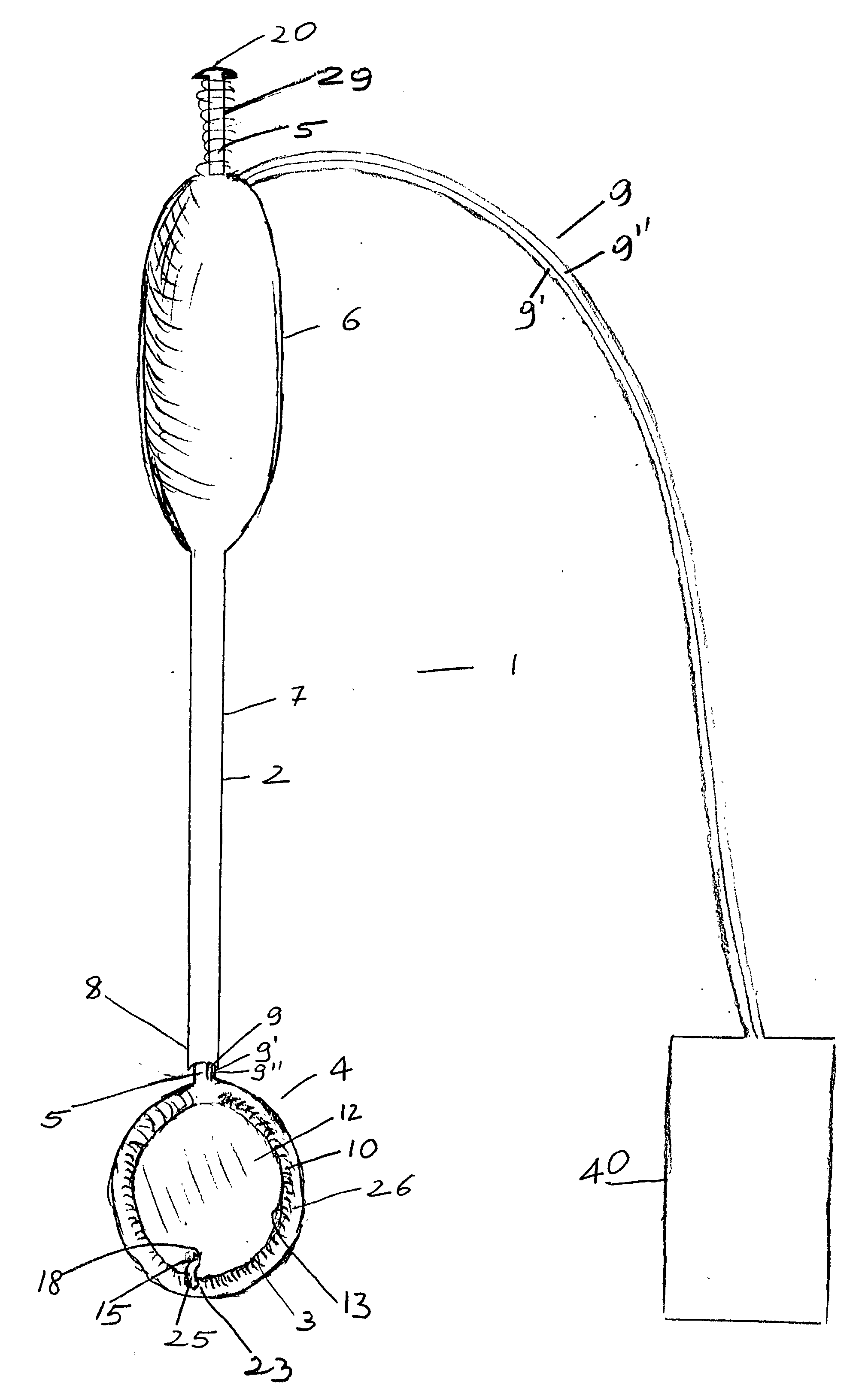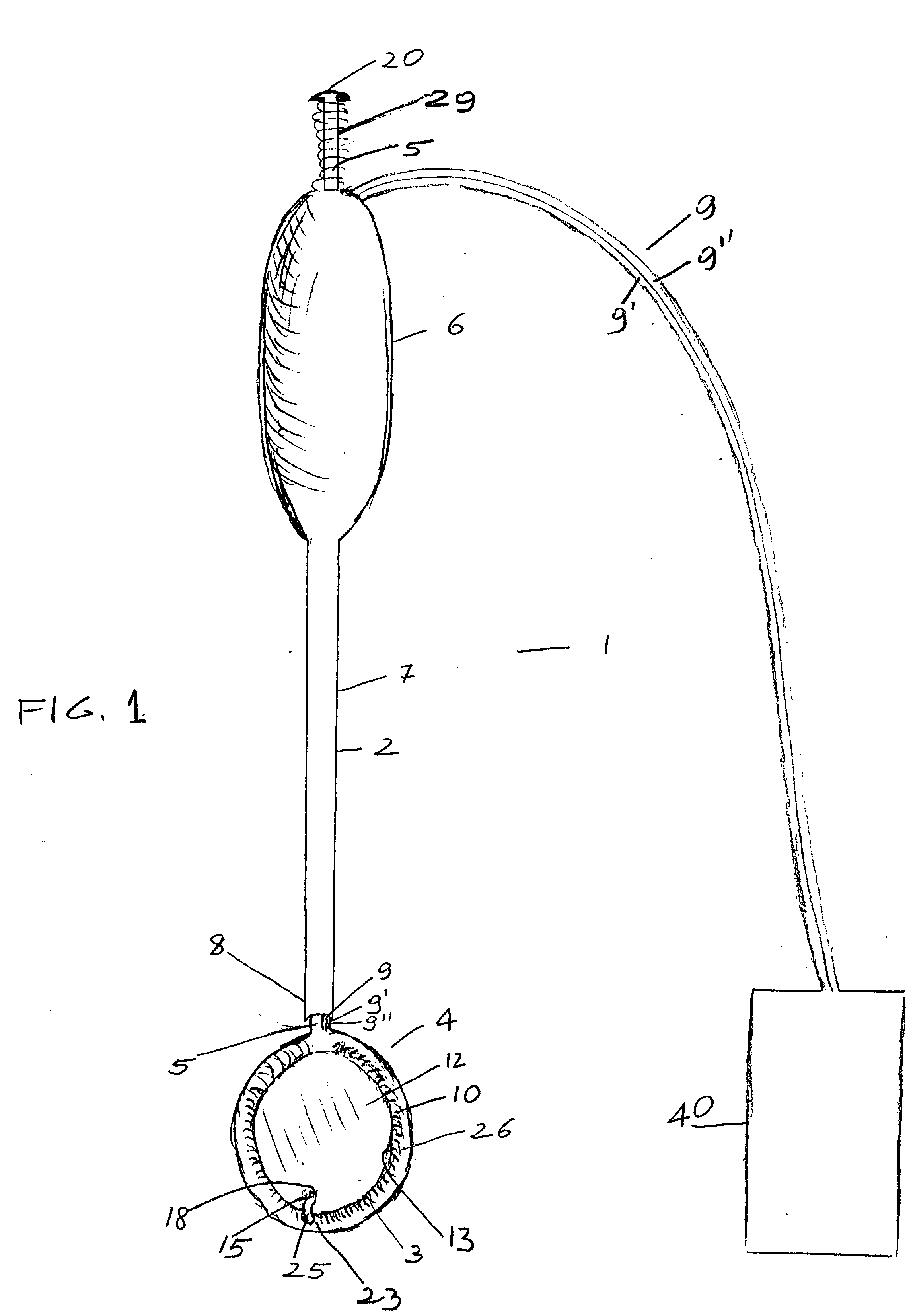Minimally invasive percutaneous ventricular assist device
a percutaneous ventricular assist and minimally invasive technology, applied in the field of minimally invasive percutaneous ventricular assist devices, can solve the problems of not being able to apply any of the known ventricular assist devices, not being able to be minimally invasive or rapidly deployed at bedside, and the chest must be open
- Summary
- Abstract
- Description
- Claims
- Application Information
AI Technical Summary
Benefits of technology
Problems solved by technology
Method used
Image
Examples
Embodiment Construction
[0025] The device generally indicated at 1 is composed of a hollow stem 2 and heart compressing / decompressing member 4, which, in its packed contracted status as it is shown in FIGS. 1 and 2, prior to insertion into a chest cavity, appears generally donut shaped.
[0026] Hollow stem 2 may be made, although not necessarily, in rigid material and is firmly attached to compressing / decompressing member 4, which in FIGS. 1 and 2, being shown in its packed contracted status, appears donut shaped.
[0027] Compressing / decompressing member 4 is mainly composed of inflatable jacket member 10, which when fully deployed has the general appearance of a sac, and, as such, has a cul de sac or base or bottom membrane 12 and circular side walls 26. In its packed contracted status as it is better shown in FIG. 2, circular side walls 26 of jacket member 10 of compressing / decompressing member 4 are rolled outwardly down to cul de sac or bottom membrane 12. In such rolled down status, side walls 26 have, as...
PUM
 Login to View More
Login to View More Abstract
Description
Claims
Application Information
 Login to View More
Login to View More - R&D
- Intellectual Property
- Life Sciences
- Materials
- Tech Scout
- Unparalleled Data Quality
- Higher Quality Content
- 60% Fewer Hallucinations
Browse by: Latest US Patents, China's latest patents, Technical Efficacy Thesaurus, Application Domain, Technology Topic, Popular Technical Reports.
© 2025 PatSnap. All rights reserved.Legal|Privacy policy|Modern Slavery Act Transparency Statement|Sitemap|About US| Contact US: help@patsnap.com



